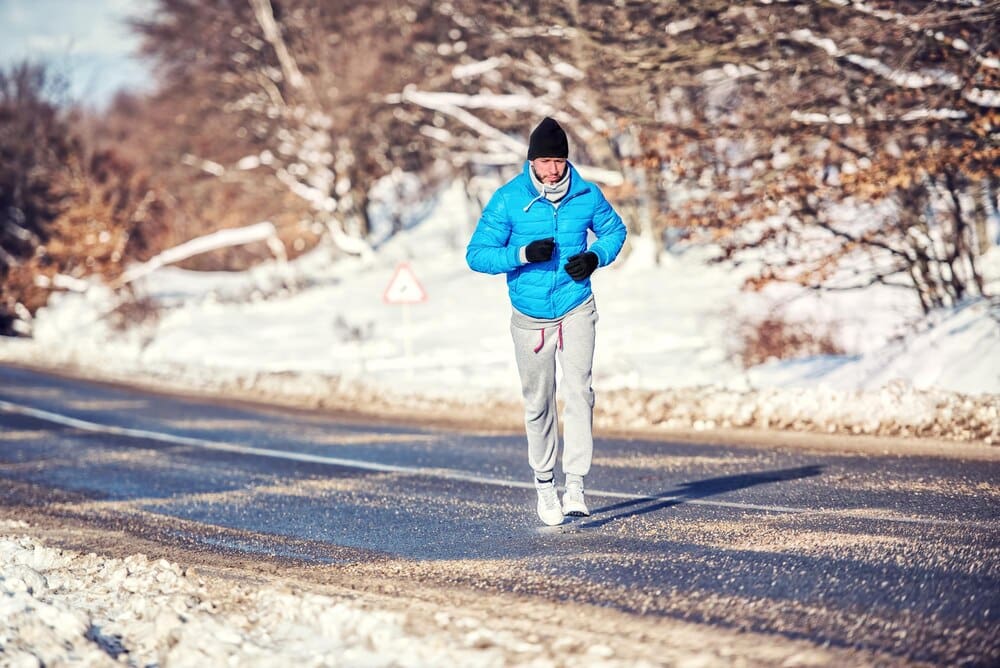For runners of all abilities, the arrival of cold weather can present a significant barrier to maintaining a consistent outdoor routine. The key to conquering the chill lies not in sheer toughness, but in smart preparation with the right apparel and accessories. By understanding the principles of layering, selecting appropriate materials like merino wool and synthetics over cotton, and protecting vulnerable extremities such as hands, ears, and feet, any runner can safely and comfortably continue their training through the fall and winter. This strategic approach to gear prevents dangerous conditions like hypothermia and frostbite, enhances performance, and ultimately transforms winter running from a daunting challenge into an invigorating and sustainable part of a healthy lifestyle.
The Core Principle: Strategic Layering
The single most important concept for dressing for a cold-weather run is layering. This method is vastly superior to wearing one single, heavy garment because it traps insulating air between each layer and, more importantly, allows you to adapt to changing conditions and your own rising body temperature by removing a layer mid-run.
A common mistake is to overdress. The goal is to start your run feeling slightly cool, almost chilly. Within the first ten minutes, your body will generate a significant amount of heat, and this initial coolness will give way to comfortable warmth without causing you to immediately overheat and sweat excessively.
The Base Layer: Moisture Management
The layer closest to your skin has one critical job: to wick moisture away. Sweat is your enemy in the cold; if it stays on your skin, it will rapidly cool and chill you to the bone, increasing your risk of hypothermia. This is why material selection is paramount for this layer.
Look for technical fabrics like synthetics (polyester, polypropylene) or, the gold standard, merino wool. Merino wool is exceptional because it not only wicks sweat effectively but also continues to insulate even when it gets damp. Critically, you must never wear cotton as a base layer. Cotton absorbs moisture and holds it against your skin, acting like a personal air conditioner you can’t turn off.
The Mid-Layer: Insulation
Your second layer is your insulation. Its function is to trap the body heat that your base layer is working to preserve. The thickness and material of this layer will depend heavily on the specific temperature and your personal tolerance for cold.
Excellent mid-layer materials include fleece, which is lightweight, breathable, and warm, or technical grid-fleece pullovers. For very cold and dry conditions, a lightweight down or synthetic-fill vest can provide exceptional core warmth without restricting arm movement. This layer should fit comfortably over your base layer without being baggy or restrictive.
The Outer Layer: Protection from the Elements
The final, outermost layer is your shield against the weather. This shell jacket or vest is designed to block wind and repel precipitation like snow, sleet, or freezing rain. A good running shell is the difference between a miserable run and a comfortable one, especially on windy days.
Look for jackets described as windproof and water-resistant. A fully waterproof jacket (often made with a membrane like GORE-TEX) is great for heavy rain but can sometimes be less breathable. For most winter running, wind and water resistance is sufficient, as breathability is crucial for letting sweat vapor escape so you don’t get damp from the inside out.
Building Your Cold-Weather Running Wardrobe
With the principles of layering understood, you can start to assemble the specific pieces of gear that will carry you through the season. Investing in a few high-quality, versatile items is more effective than having a closet full of mediocre gear.
Lower Body: Tights and Pants
Your legs generate a lot of heat, so they often require less insulation than your core. For cool days, standard running tights are sufficient. As the temperature drops, you’ll want to switch to thermal or fleece-lined tights for added warmth.
Many winter-specific running tights and pants feature windproof panels on the front of the thighs and knees. This is a highly effective feature, as it blocks the biting wind where you feel it most while allowing the back of the pants to remain more breathable. For extreme cold, you can even layer a pair of wind pants over your thermal tights.
Footwear: Shoes and Socks
Happy feet are essential for a good winter run. While you can often use your regular running shoes, there are features that make some models better for cold and slick conditions. Shoes with GORE-TEX (GTX) or other waterproof uppers can keep your feet dry from slush and snow, while outsoles with more aggressive lugs provide better traction.
Your socks are just as important as your shoes. Just like with your base layer, avoid cotton at all costs. Opt for moisture-wicking socks made from merino wool or a synthetic blend. A slightly thicker wool sock will provide warmth and cushioning, and choosing a crew-length sock ensures there is no exposed skin at your ankle between your tights and your shoe.
Protecting Your Extremities: The Non-Negotiables
Your body prioritizes keeping your core warm, which means your hands, head, and ears are often the first to feel the cold as blood flow is redirected. Protecting them is not optional; it’s essential for safety and comfort.
Hats and Headbands
You can lose a significant amount of body heat through your head. A simple fleece or wool beanie is perfect for containing that heat. On milder cold days, a thermal headband can be a great option, keeping your ears covered and warm while allowing more heat to vent from the top of your head.
Gloves and Mittens
Cold, numb fingers can end a run quickly. For moderately cold days, a pair of lightweight running gloves will suffice. When it gets truly frigid, mittens are the superior choice. By keeping your fingers together in the same compartment, they share warmth far more effectively than gloves do. Many runners love convertible “glittens,” which are gloves with a mitten flap that can be pulled over for extra warmth.
Neck Gaiters and Balaclavas
A neck gaiter (often called a Buff) is an incredibly versatile piece of gear. It protects your neck from the wind and can be pulled up over your chin, mouth, and nose. Breathing through the fabric helps to warm the frigid air before it hits your lungs, which can prevent irritation and make running much more comfortable. For the most severe cold, a full balaclava offers complete head, neck, and face coverage.
Beyond Warmth: Staying Safe on Winter Runs
Cold weather often brings other challenges, namely shorter daylight hours and slippery surfaces. Your gear choices should reflect a commitment to safety as well as warmth.
Be Seen: The Importance of Reflectivity
With fewer hours of daylight in the winter, many of your runs will likely be in the dark or twilight. Visibility is paramount. Choose outer layers in bright, vibrant colors for daytime running. For dawn, dusk, and night runs, ensure your gear has ample built-in reflective detailing.
Supplement your apparel with additional reflective accessories. A lightweight reflective vest, worn over your jacket, is one of the most effective tools for being seen by motorists. Headlamps not only help you see the path ahead but also make you visible to others. Flashing lights clipped to your waist or shoes add another layer of safety.
Traction and Stability
Ice and packed snow are major hazards. If you plan to run consistently through a winter with these conditions, you need to address traction. For slick spots, you can purchase slip-on traction devices like Yaktrax or Kahtoola MICROspikes that fit over your regular running shoes.
These devices use coils or metal spikes to grip the ice, providing a secure footing that allows you to run with a more natural stride. When running on potentially slick surfaces, it is also wise to adjust your form by taking shorter, quicker, and flatter steps to keep your center of gravity stable.
What to Wear When: A Practical Temperature Guide
While personal preference plays a large role, this guide provides a solid starting point for layering based on the “feels like” temperature, which accounts for wind chill.
- 40-50°F (4-10°C): A long-sleeve technical shirt and shorts or capris are often enough. Some may prefer light gloves or a headband at the start of the run.
- 30-40°F (-1 to 4°C): A long-sleeve base layer, a light wind-resistant jacket or vest, and running tights. A hat and lightweight gloves are recommended.
- 20-30°F (-7 to -1°C): A thermal long-sleeve base layer, a fleece mid-layer or insulated vest, and thermal tights. A warm hat that covers the ears and insulated gloves are necessary. Wool socks are a must.
- 10-20°F (-12 to -7°C): A heavyweight base layer, an insulated jacket or a fleece mid-layer plus a shell jacket, and wind-resistant thermal tights. A balaclava or neck gaiter to cover your face, warm mittens, and potentially wind briefs are wise additions.
- Below 10°F (Below -12°C): At these temperatures, all skin should be covered to prevent frostbite. Use your warmest layers, including a shell jacket and pants. Mittens, a balaclava, and potentially ski goggles to protect your eyes from the wind are crucial. This is for experienced winter runners, and safety should be the top priority.
Ultimately, running through the winter is not only possible but can be deeply rewarding. The crisp air and quiet, snowy landscapes offer a unique and peaceful experience. By investing in the right gear and adopting a smart layering strategy, you can do more than just survive the cold; you can thrive in it, emerging in the spring as a stronger, more resilient runner.







